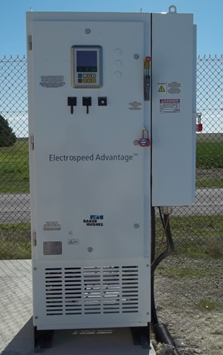The submersible pump system consists of both downhole and surface components. The main surface components are transformers, motor controllers, junction box and wellhead. The main downhole components are the motor, seal, pump and cable. Additional downhole components may be included to the system: data acquisition instrumentation, motor lead extension, cable bands and protectors, gas separator, check and drain valves.
The following video gives a quick equipment overview of the ESP submersible pumping system:
The following figure shows schematic diagram of a submersible pump installation:








